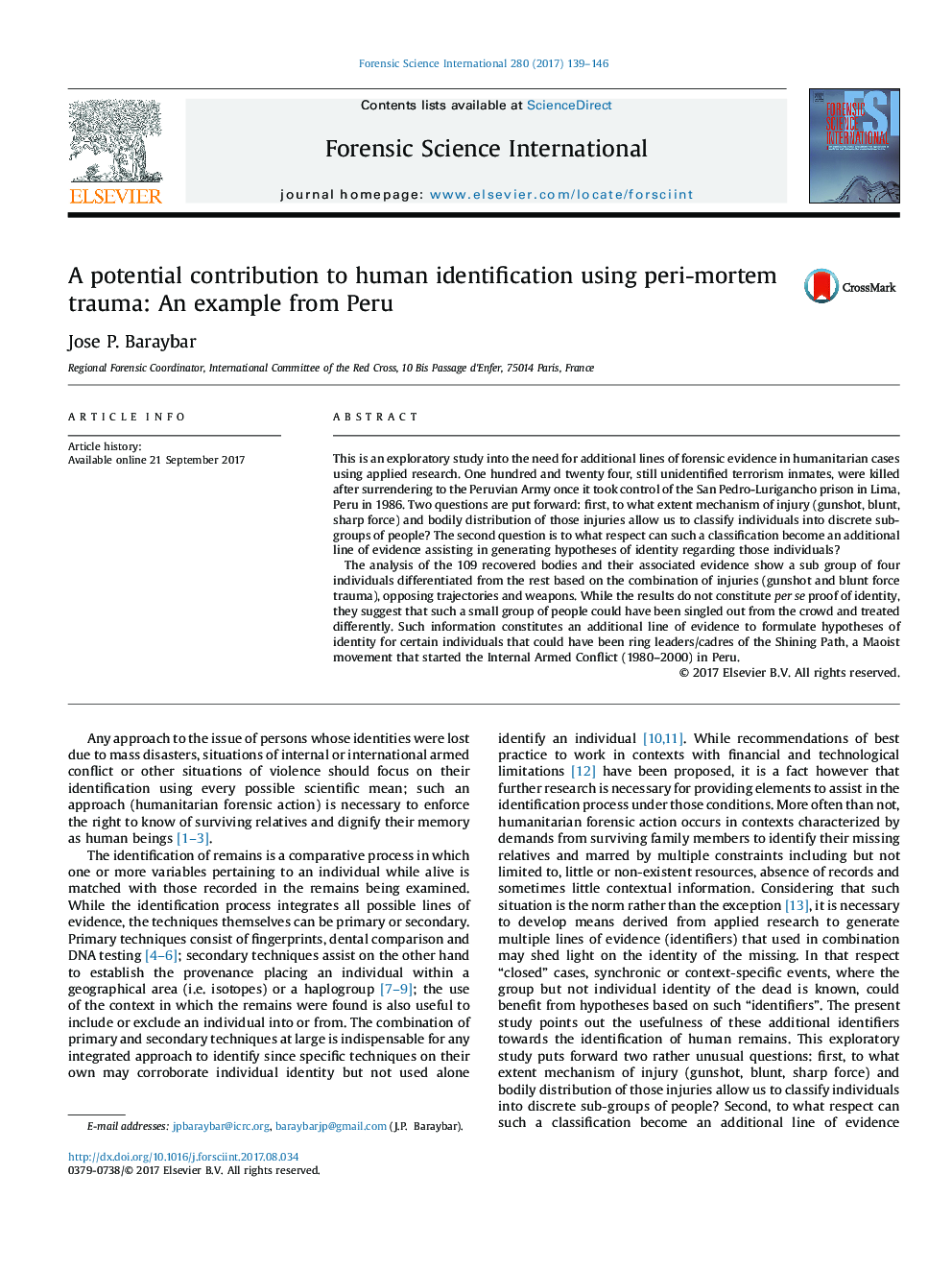| Article ID | Journal | Published Year | Pages | File Type |
|---|---|---|---|---|
| 4760243 | Forensic Science International | 2017 | 8 Pages |
â¢Additional lines of forensic evidence using applied research is proposed.â¢Analysis of one 109 sets of human remains killed in a prison in Lima, Peru in 1986.â¢Types of injuries, opposing trajectories and weapons differentiated a small group.â¢Hypotheses of identity for certain individuals in the subgroup could be formulated.
This is an exploratory study into the need for additional lines of forensic evidence in humanitarian cases using applied research. One hundred and twenty four, still unidentified terrorism inmates, were killed after surrendering to the Peruvian Army once it took control of the San Pedro-Lurigancho prison in Lima, Peru in 1986. Two questions are put forward: first, to what extent mechanism of injury (gunshot, blunt, sharp force) and bodily distribution of those injuries allow us to classify individuals into discrete sub-groups of people? The second question is to what respect can such a classification become an additional line of evidence assisting in generating hypotheses of identity regarding those individuals?The analysis of the 109 recovered bodies and their associated evidence show a sub group of four individuals differentiated from the rest based on the combination of injuries (gunshot and blunt force trauma), opposing trajectories and weapons. While the results do not constitute per se proof of identity, they suggest that such a small group of people could have been singled out from the crowd and treated differently. Such information constitutes an additional line of evidence to formulate hypotheses of identity for certain individuals that could have been ring leaders/cadres of the Shining Path, a Maoist movement that started the Internal Armed Conflict (1980-2000) in Peru.
